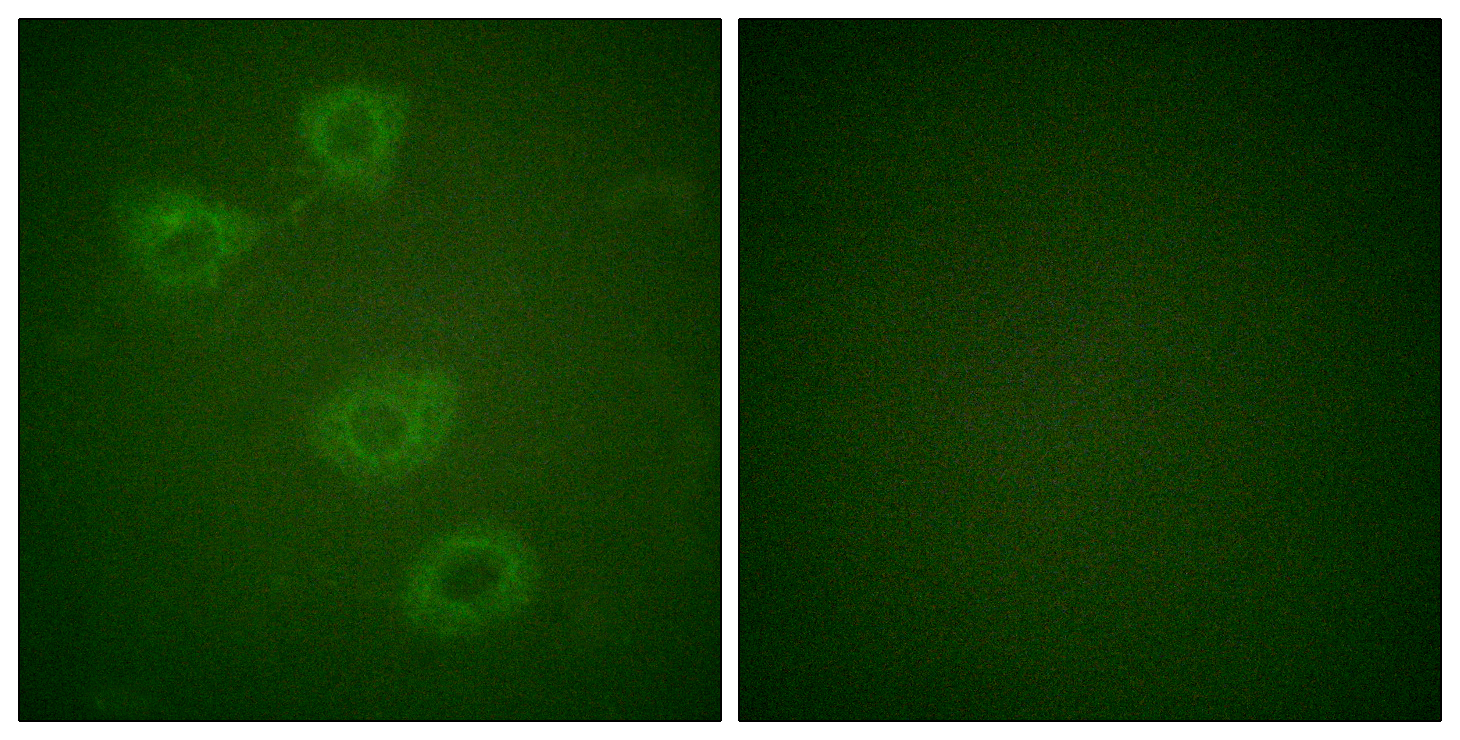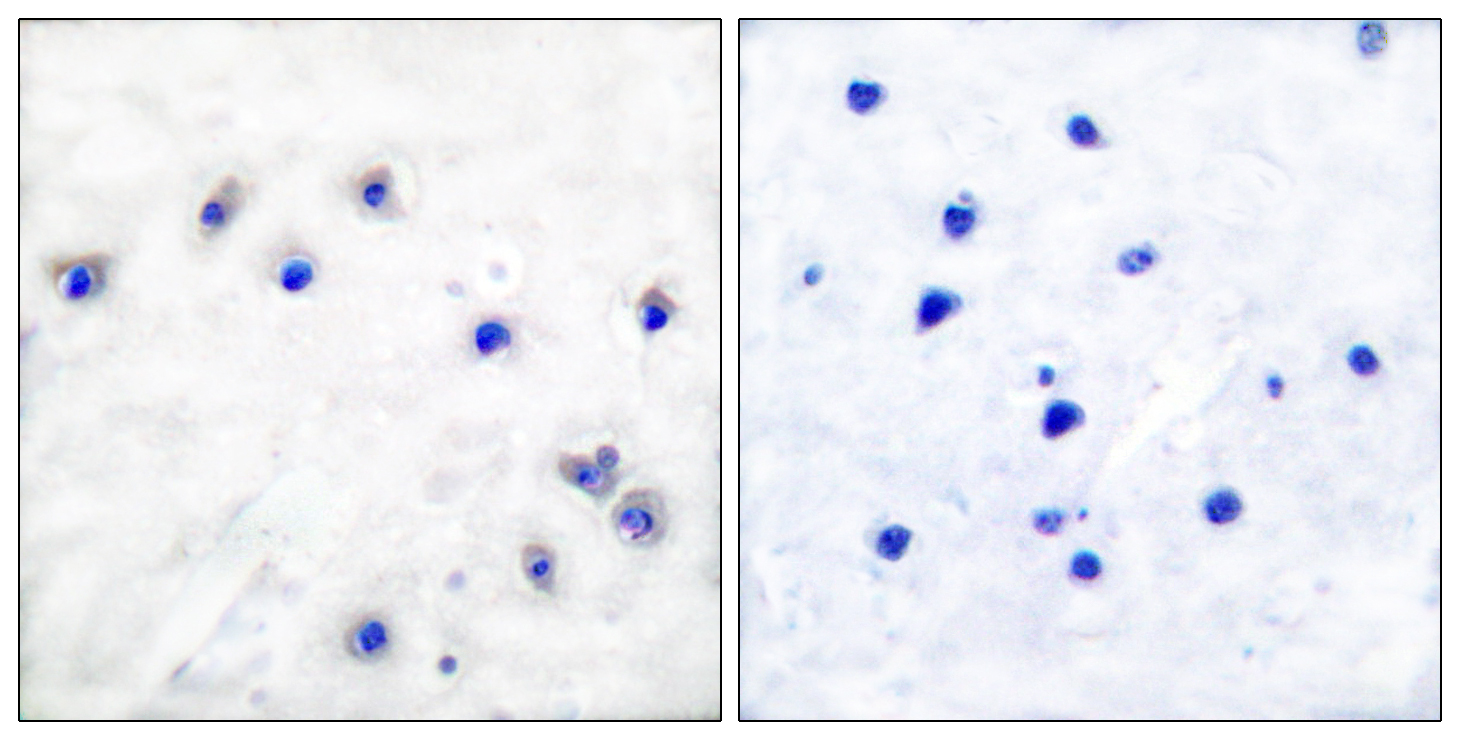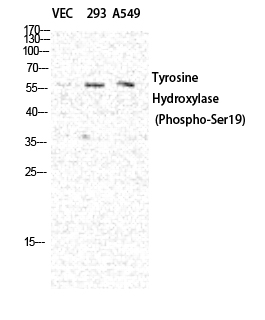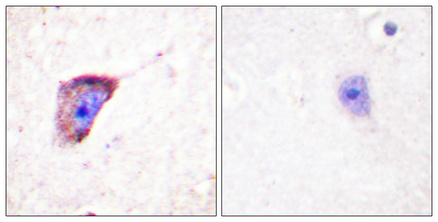产品名称
TH (phospho Ser19) Rabbit Polyclonal Antibody
别名
TH; TYH; Tyrosine 3-monooxygenase; Tyrosine 3-hydroxylase; TH
蛋白名称
Tyrosine 3-monooxygenase (EC 1.14.16.2) (Tyrosine 3-hydroxylase) (TH),Tyrosine Hydrolase
存储缓冲液
Liquid in PBS containing 50% glycerol, 0.5% BSA and 0.02% New type preservative N.
Human Gene Link
http://www.ncbi.nlm.nih.gov/sites/entrez?db=gene&term=7054
Human Swissprot No.
P07101
Human Swissprot Link
http://www.uniprot.org/uniprotkb/P07101/entry
Mouse Gene Link
http://www.ncbi.nlm.nih.gov/sites/entrez?db=gene&term=21823
Mouse Swissprot No.
P24529
Mouse Swissprot Link
http://www.uniprot.org/uniprot/P24529
Rat Gene Link
http://www.ncbi.nlm.nih.gov/sites/entrez?db=gene&term=25085
Rat Swissprot Link
http://www.uniprot.org/uniprot/P04177
免疫原
The antiserum was produced against synthesized peptide derived from human Tyrosine Hydroxylase around the phosphorylation site of Ser19. AA range:10-59
特异性
Phospho-TH (S19) Polyclonal Antibody detects endogenous levels of TH protein only when phosphorylated at S19.
稀释度
WB 1:500 - 1:2000. IHC 1:100 - 1:300. IF 1:200 - 1:1000. ELISA: 1:5000. Not yet tested in other applications.
宿主
Polyclonal, Rabbit,IgG
背景介绍
The protein encoded by this gene is involved in the conversion of tyrosine to dopamine. It is the rate-limiting enzyme in the synthesis of catecholamines, hence plays a key role in the physiology of adrenergic neurons. Mutations in this gene have been associated with autosomal recessive Segawa syndrome. Alternatively spliced transcript variants encoding different isoforms have been noted for this gene. [provided by RefSeq, Jul 2008],
组织表达
Mainly expressed in the brain and adrenal glands.
细胞定位
Cytoplasm, perinuclear region . Nucleus . Cell projection, axon . Cytoplasm . Cytoplasmic vesicle, secretory vesicle, synaptic vesicle . When phosphorylated at Ser-19 shows a nuclear distribution and when phosphorylated at Ser-31 as well at Ser-40 shows a cytosolic distribution (By similarity). Expressed in dopaminergic axons and axon terminals. .
信号通路
Tyrosine metabolism;Parkinson's disease;
功能
catalytic activity:L-tyrosine + tetrahydrobiopterin + O(2) = 3,4-dihydroxy-L-phenylalanine + 4a-hydroxytetrahydrobiopterin.,cofactor:Fe(2+) ion.,disease:Defects in TH are the cause of dystonia DOPA-responsive autosomal recessive (ARDRD) [MIM:605407]; also known as autosomal recessive Segawa syndrome. ARDRD is a form of DOPA-responsive dystonia presenting in infancy or early childhood. Dystonia is defined by the presence of sustained involuntary muscle contractions, often leading to abnormal postures. Some cases of ARDRD present with parkinsonian symptoms in infancy. Unlike all other forms of dystonia, it is an eminently treatable condition, due to a favorable response to L-DOPA.,enzyme regulation:Phosphorylation leads to an increase in the catalytic activity.,function:Plays an important role in the physiology of adrenergic neurons.,online information:Tyrosine hydroxylase entry,pathway:Catecholamine biosynthesis; dopamine biosynthesis; dopamine from L-tyrosine: step 1/2.,similarity:Belongs to the biopterin-dependent aromatic amino acid hydroxylase family.,tissue specificity:Mainly expressed in the brain and adrenal glands.,
纯化
The antibody was affinity-purified from rabbit antiserum by affinity-chromatography using epitope-specific immunogen.




.jpg)

